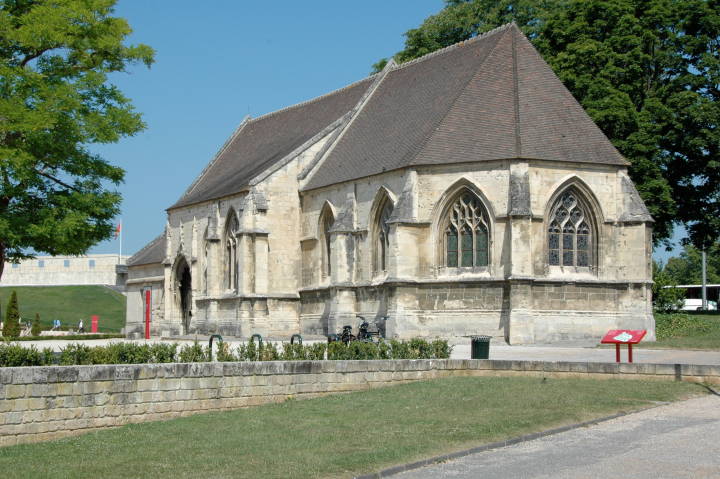
Our first stop was at L'Église de Saint-Pierre, which lay only a short 4-5 minute walk from the hotel.


Left: Middle: Here Cynthia Gamble, Kevin Leonard, and Diane Leonard, with Norma Wilson behind look at the church and listen as Jim Spates reads some of what Ruskin wrote about its decoration. Right: After leaving St. Peter's, we crossed the street and climbed the hill to what remains of William the Conqueror's Chateau (or castle).



Left: One of the first things we saw was this wedding photo session on the ramparts, after which we came upon the Church of St. George, which was closed while they turn it into a visitor's center. Right: A view of the walls overlooking the church and the city center.




Left: To our right we found the Musée des Beaux-Arts, which we didn't have time to see that day. Its courtyard has this array of grotesque sculptures. Next, Cynthia and George sought a restaurant, found a lovely place in a pedestrian street across and downhill from the fortress, and we all had a leisurely lunch outside. Middle: Cynthia took this photo of Our Leader and George at lunch, and she made sure we saw that we saw these old timbered gothic buildings, which look exactly like those Samuel Prout, the nineteenth-century artist who was one of Ruskin's drawing teachers, drew in Lisieux.




Left: The next stop on the tour was St. Saveur, an odd little church, the left side of which was in high gothic style, the right in renaissance, but before we arrived we encountered this embodiment of a local pre-wedding custom: We didn't now if they give the groom a bachelor party, but they do dress him up in bizarre costumes, here as a woman, and parade him around the city. Kevin Leonard, recognizing what was going on and that this young man was not a transvestite hooker, wished him best wishes on his marriage, at which point the young man stopped, applied a lot of lipstick, and planted a juicy kiss on Kevin's cheek. The next day when George was exploring the city by himself while the others tried again (successfully) to see Chamborg and returned home after midnight, he encountered a group of women, and when they approached him . . . “Monsieur . . . ” he wished the bride-to-be good luck on her marriage and moved away quickly. Coward!
Middle left: One of the little men holding scrolls on the outside of St. Saveur. Middle right: Norma and Jim inside the church. Right: This flutist practicing in the wonderful acoustics of the old church provided of the nicest parts of George's day. He sat and listened to him for fifteen minutes instead of Ruskinizing.



Then it was off to the Abbaye aux Hommes here seen (right) from the cloister. Middle: A photo by Robert Walmsley of the interior. The monastery seemed far more impressive outside than in the church, the focal point of which was the tomb of William the Conqueror (at right). According to Jim, during his burial, a peasant or farmer interrupted the service, claiming that his land had been illegally taken for the church; the villagers agreed, and the bishop had to count out 70 sou or something to pay him off before they could bury the famous king! Not the only disaster: when the clergymen lowered the coffin into the grave, it slipped, broke open, and the smell was so bad they quickly concluded the service as everyone ran out of the church. Such is glory.
More about On the Old Road V — June 2010
- The Master of the Old Road sends an e-mail invitation
- George arrives in Rouen and finds himself in the Twilight Zone
- George meets up with the Ruskinians
- Lunch near St. Maclou
- Reading Ruskin in the presence of the work he describes
- Paul André Sement gets us into St. Maclou
- The Ossuary or Boneyard
- From Rouen to Caen with a stop at Lisieux
- With The Ruskinians in Caen — St. Peter's Church. William the Conqueror's castle, men wearing lipstick, and other grotesques
- With The Ruskinians in St. Lô, Coutances, and Bayeux — a long day
- The first two days in Chartres
- The last morning in Chartres
Last modified 15 August 2010
